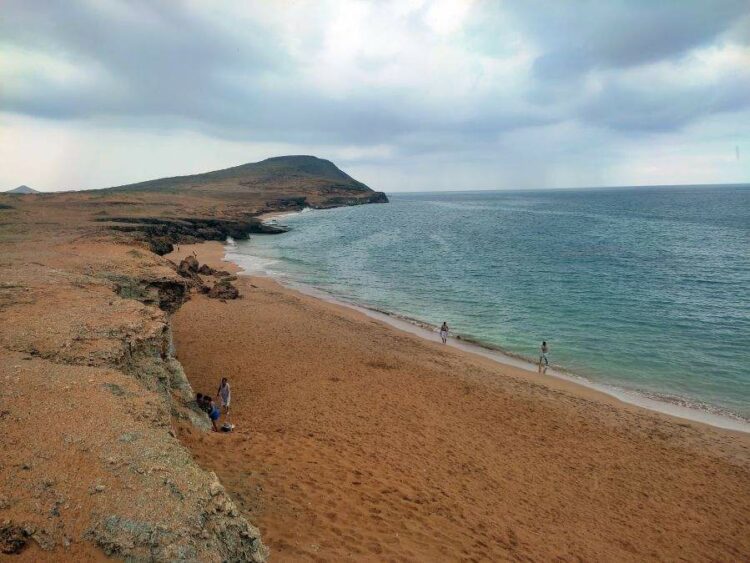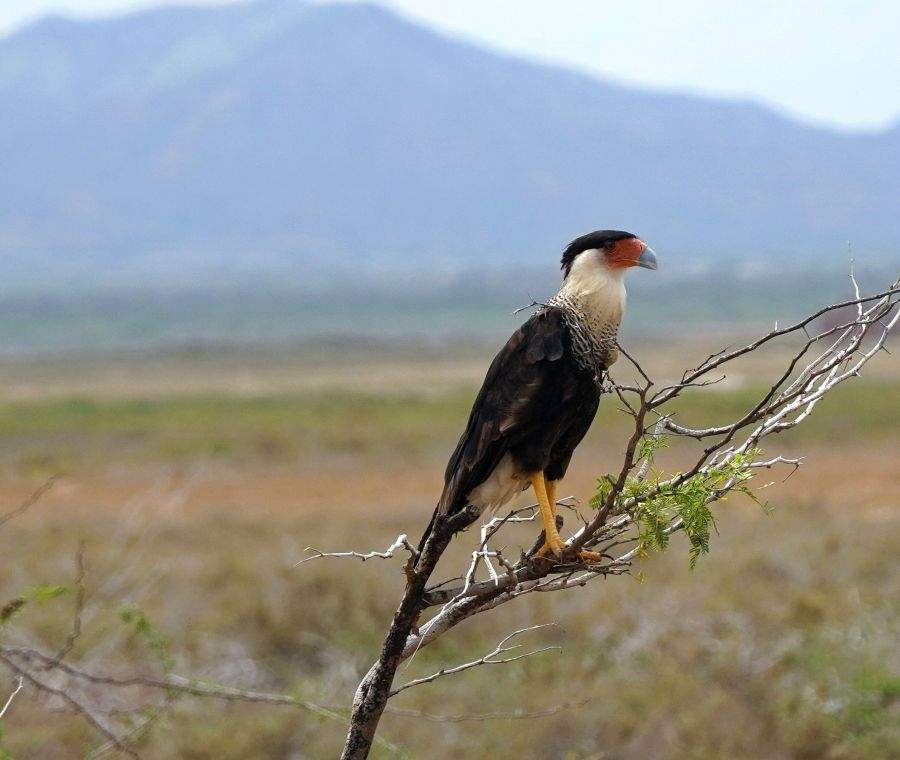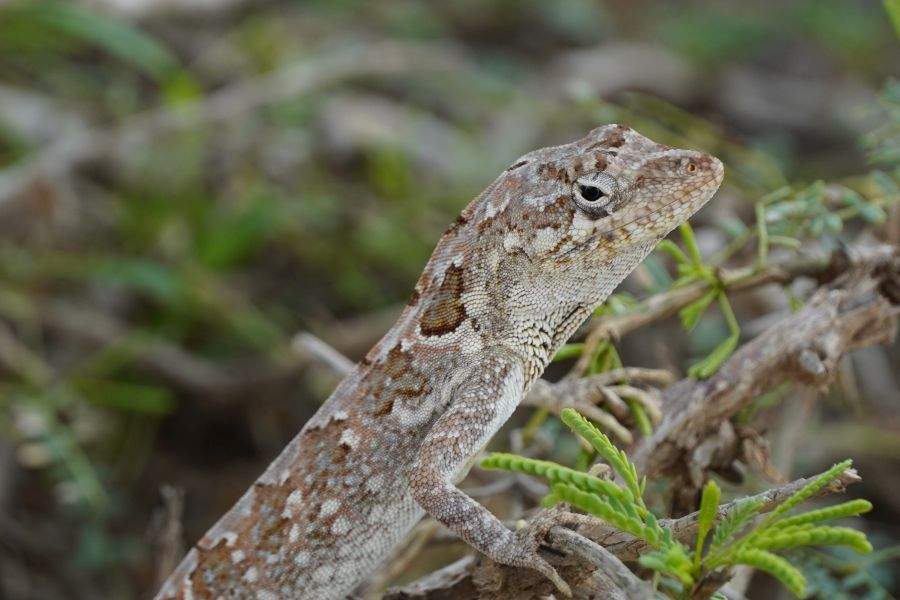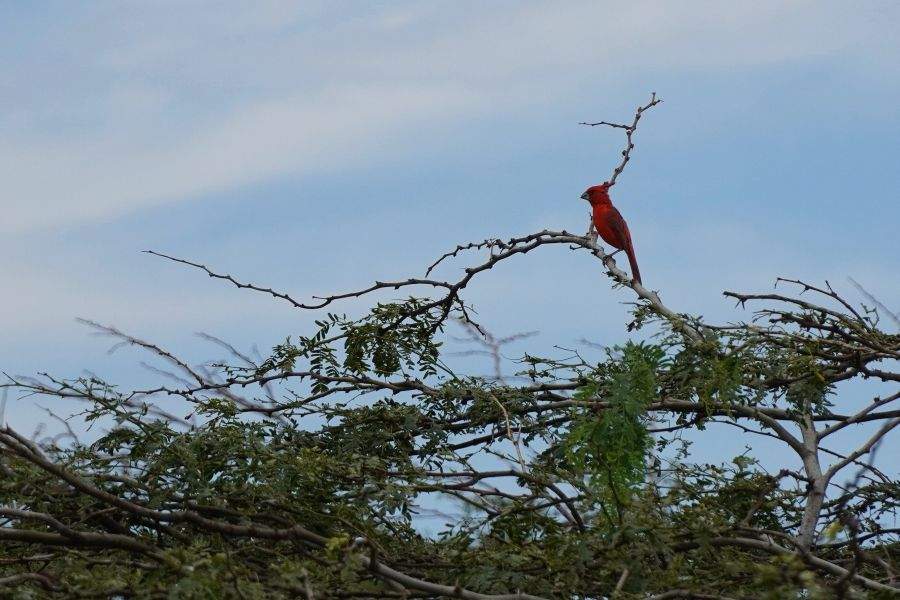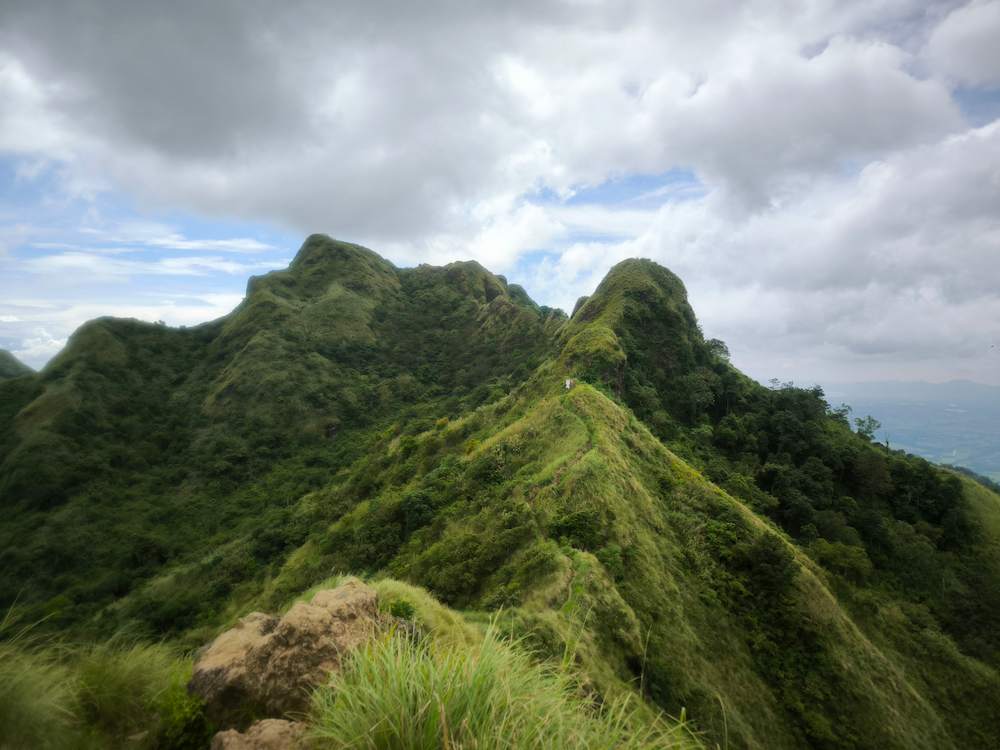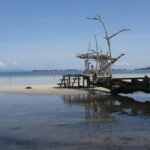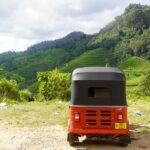Cabo de la Vela
When we first saw Cabo de la Vela, we were immediately excited. A place where Caribbean sea meets desert? To be honest, that was beyond our imagination. We associated the Caribbean Sea with palm trees and light sandy beaches. Therefore, it was quickly clear that we had to put the cape at the northwestern end of the Guajira Peninsula on our agenda. The Guajira Peninsula is also the northernmost point of South America with the Punta Gallina. The peninsula is mostly inhabited by the indigenous Wayúu people. Most of the Guajira Peninsula belongs to Colombia, but a small part is Venezuelan territory. On the peninsula there are immense deposits of hard coal, mainly for export. Especially on the way to Cabo de la Vela one notices the, compared to the rest of the area, hypermodern looking railroad line, which runs mostly parallel to the road and is used to transport the coal. The population of the area makes a rather poor impression. Cabo de la Vela a popular place with kite surfers. After we had observed us in “Santuario de Fauna y Flora los Flamencos” flamingos it went thus still further into the north of South America.
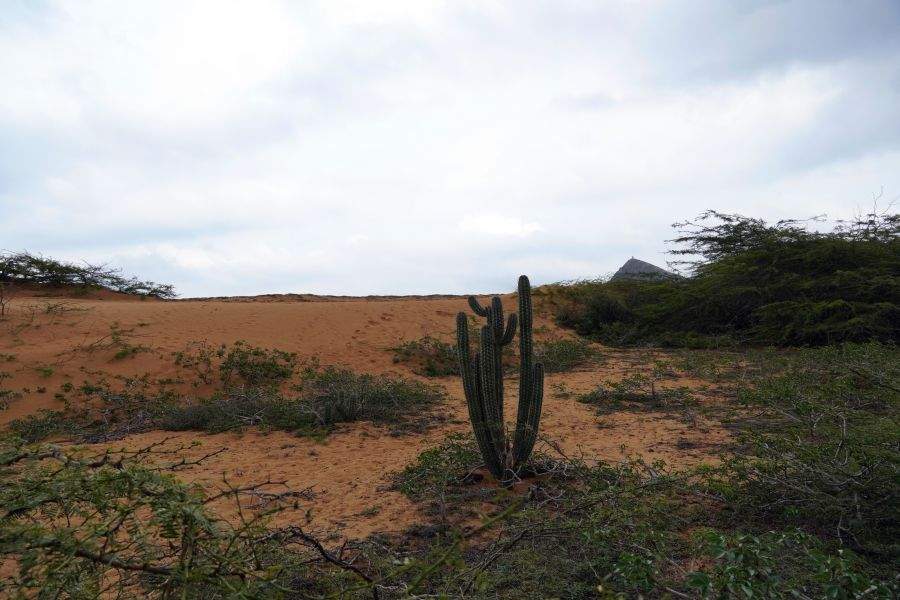
Mixed feelings of our visit to the desert
On the one hand, we really liked the area, on the other hand, we had to realize that we had the feeling that tourism is somewhat out of place here. The people who live from tourism seem to be doing well here, while the rest of the population seems very poor. Drinking water, staple foods etc. all have to be brought over from the cities, agriculture is hardly possible due to the drought. Likewise, we had been told in advance that the locals and especially children close off the streets and let you pass only against food or sweets. Therefore, next time I would take lentils, rice or beans to give to the locals. We saw how people were heartily pleased when other people gave them to a Wayúu family. What contributed to not really feeling comfortable for us at some point was the staff at our hostel begging us twice for money. I was woken up as I was falling asleep and asked if I didn’t have some money for him – an absolute no-go for me. Also, we had the great “luck” of being on the beach while a bitter thunderstorm was coming up and raging directly overhead. Since everything is pretty flat in the desert, there was no real shelter either and we just stayed crouched hoping it wouldn’t hit us – that was pretty scary. Apart from that, the area is very interesting. For longer walks, be sure to pack enough water. Sunscreen and a head covering are also essential. The beaches “Ojo de Agua” and the “Playa del Pilon” are super beautiful and special, because they just offer a great contrast with desert sand and Caribbean sea. We just walked for a day and looked at the beaches.
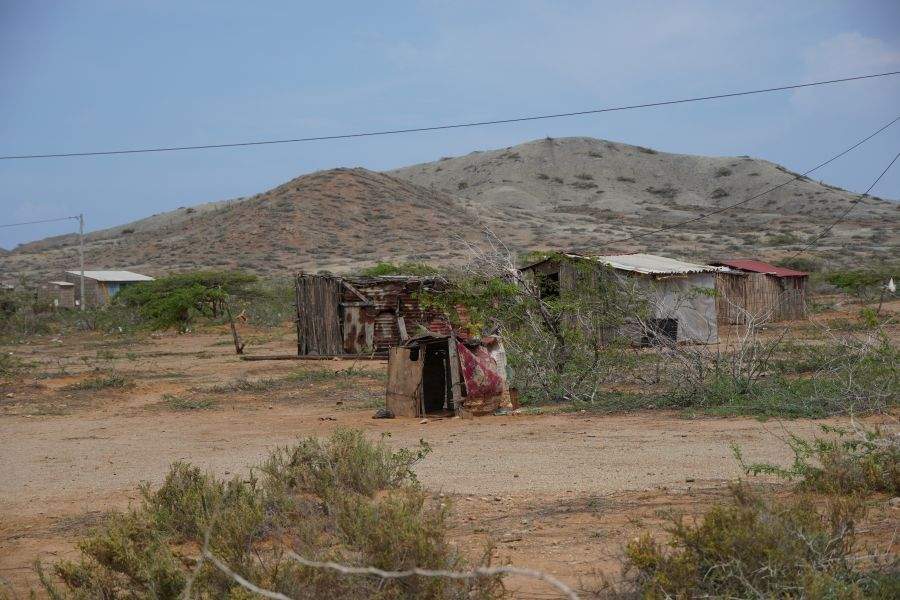
Tips for Cabo de la Vela
- Pack sunscreen and headgear
- Take enough drinking water
- Rice, lentils or beans to “pay” for the transit
- Arrive in Uribia before 3:00 p.m., otherwise you will not be able to get to Cabo de la Vela
- Take cash with you! There are no cash machines
Accommodation in Cabo de la Vela
Accommodations are plentiful in the small town, also in a variety of price ranges. There are a couple of more upscale accommodations, the kite surfing accommodations and primitive hostels with hammock dorms. We chose the “Hotel Y Restaurante El Caracol” on the recommendation of the driver. We paid 10,000 COP (~2€) per night for a hammock. The dorm has room for a few hammocks, which are hung up as needed. You also have a view of the sea, which is really nice. Nevertheless, it has us, as described above, really annoyed that you are begged even by the staff of the hostel. The food is relatively basic and usually both in the morning and in the evening arepas with scrambled but also just relatively very cheap.
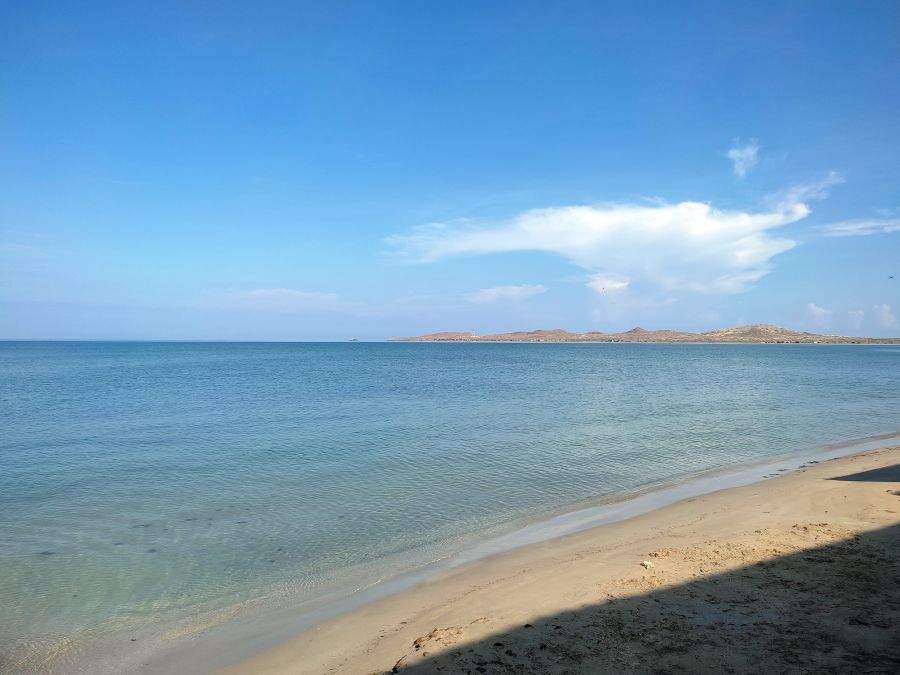
Directions to Cabo de la Vela
Getting to Cabo de la Vela is relatively simple, although not really cheap. It is best to leave relatively early in the morning. First you need a transport to Riohacha. For example, we took a colectivo from the Santuario de Fauna y Flora los Flamencos in Camarones, which cost us 7,000 COP (~ €1.50) per person. From Santa Marta there are buses to Riohacha or from Palomino there are colectivos. On the way to Riohacha tell the driver to let you off at the colectivos to Uribia or if necessary take a motorcycle cab or other vehicle to the colectivo stand. From here it is a short 1.5 hour drive to Uribia. The ride costs again just under 20,000 COP (~ 4€) per person. Also tell this driver that he will let you out at the intersection (Cuatro via Uribia mochilleros) before the actual town, from where the jeeps continue to Cabo de la Vela. The trip costs 40,000 COP (~ 8 €) per person and takes about 2 hours. You can reach the driver via Whatsapp +57 321 7542583. He leaves at 15:00 o’clock for the last time. You may have to wait a little while for the car to fill up. The road here is not paved and it gets a bit bumpy depending on the weather. There are also partial seats for 30,000 but they are then on the loading area of the jeep and were too painful for us after 10 minutes, because you constantly hit your whole body on the metal linkage. The way back is logically reversed.
Here again briefly summarized:
1) Santa Marta, Palomino, Camarones -> Riohacha (5.000 – 20.000 COP)
2) Riohacha -> Uribia (20.000 COP)
3) Uribia -> Cabo de la Vela (40.000 COP)
Places to see in Cabo de la Vela
In Cabo de la Vela there are several possibilities and activities. If you want to go to the northernmost point of South America, the Punta Gallina, you can only do this with a tour from Cabo de la Vela. The pictures looked really nice, but for us it was just too expensive. The tour costs +/- 50 € per person and includes some driving on land or by boat (depending on the weather). One night is included and you return the next day. We really liked the two beaches “Ojo de Agua” and the “Playa del Pilon”.
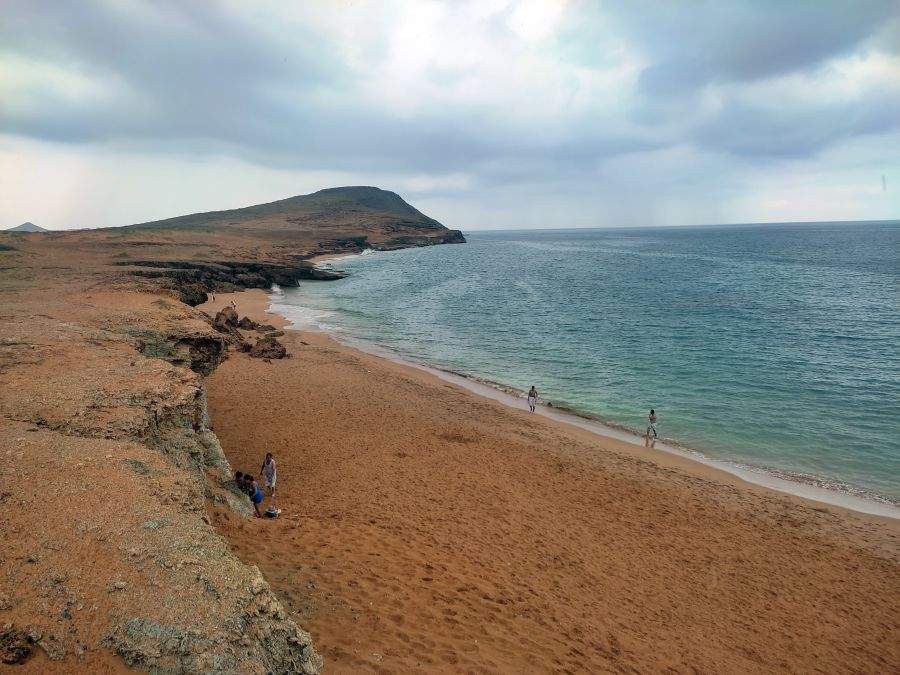
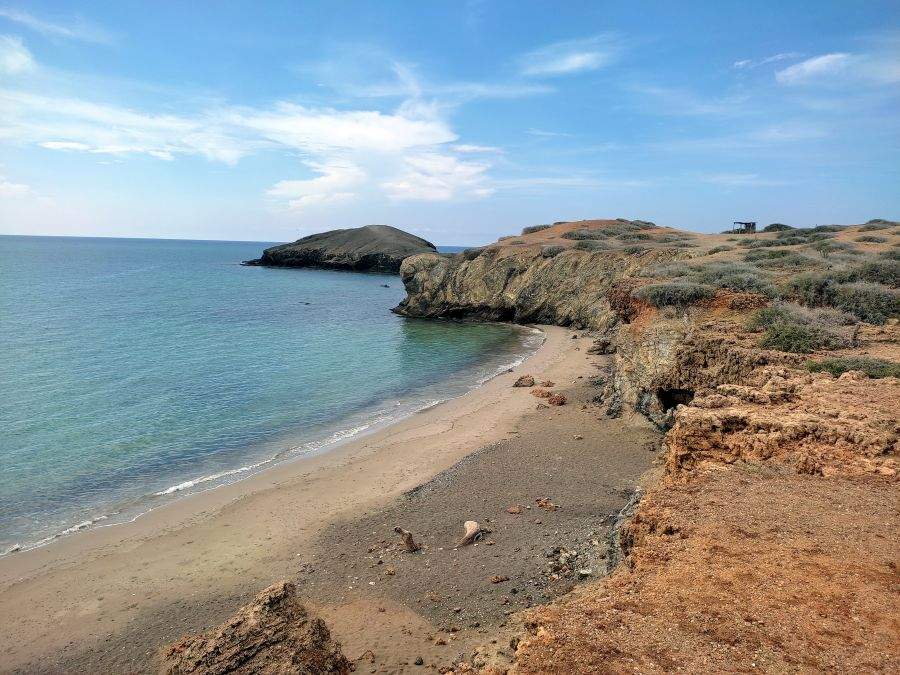
Eating and drinking in Cabo de la Vela
Eating and drinking in Cabo de la Vela was much more expensive than in the rest of Colombia. This is due to the fact that all food must be brought to the village and then refrigerated. The food was about twice as expensive as in other places in Colombia. A “menu del dia” costs here around 20,000 COP (~4 €). Cheap you could eat in our accommodation “El Caracol” for 10,000 COP (~ 2 €) per dish (usually arepas with scrambled eggs).
Flora & Fauna in Cabo de la Vela
If you are very interested in flora and fauna like I am, you will come across some exciting animals. We have raven vultures, purple cardinals, Caribbean caracaras, Bahamaanolis and another lizard that I could not determine.


